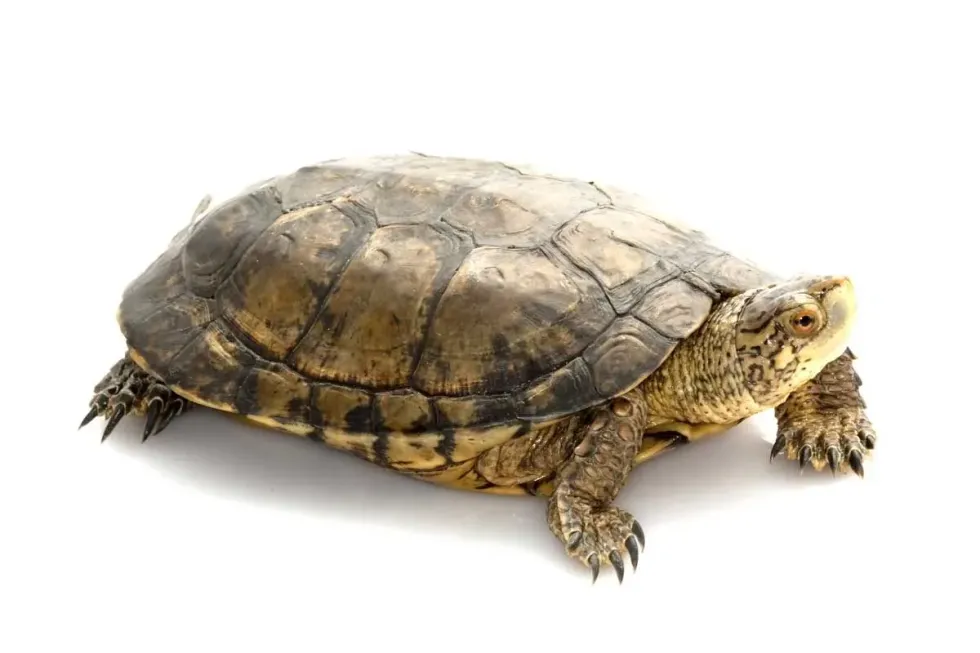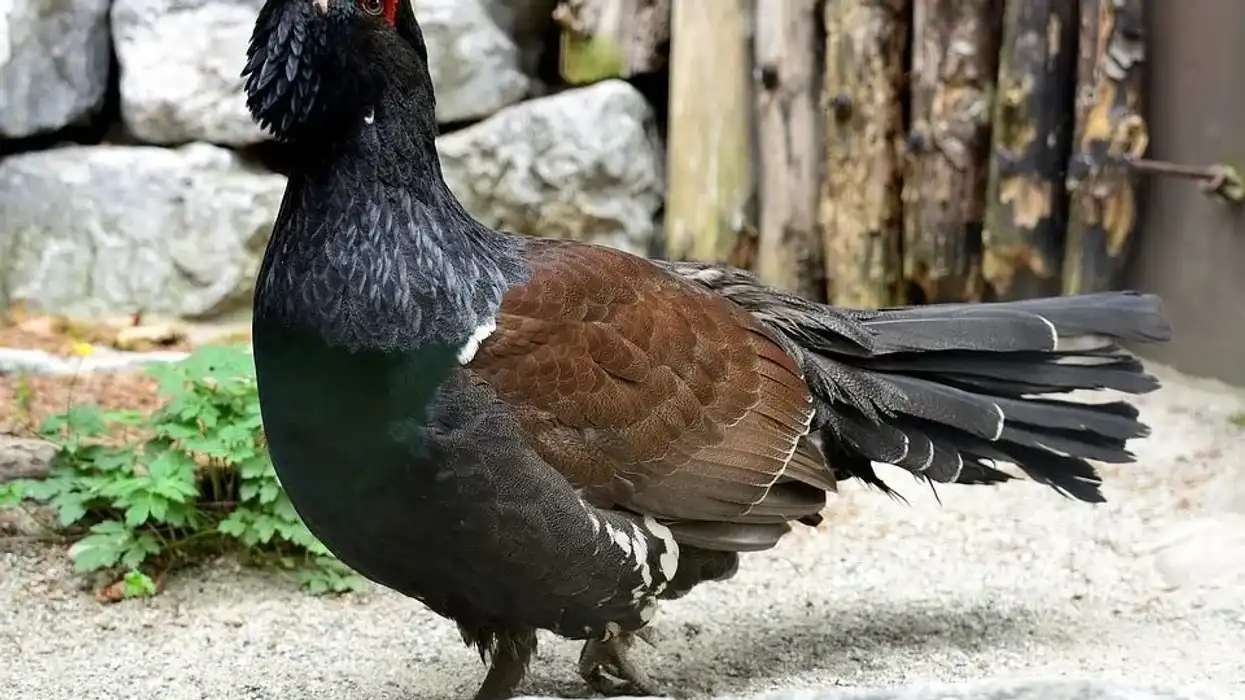The western pond turtle (Actinemys Marmorata) is also known as the Pacific pond turtle. The western pond turtle range extends from British Columbia, Canada to Baja California. The Department of Fish of the U.S. Fish and Wildlife Service under the endangered species act has announced western pond turtles to be under protection.
They use both aquatic and terrestrial habitats. Western pond turtle predators include bullfrogs, raccoons, otters, coyotes. The southern species of western pond turtles are called Actinemys pallida.
This species of turtle is listed as an endangered species by Washington state, throughout California. The western pond turtle endangered status is attributed to human activities resulting in its habitat loss. After reading about this aquatic animal, you may also look at these Florida softshell turtle facts and hawksbill sea turtle facts.
Western Pond Turtle Interesting Facts
What type of animal is a Western Pond Turtle?
A western pond turtle (actinemys marmorata) is a freshwater turtle. They are naturally bred hatchlings.
What class of animal does a western pond turtle belong to?
The western pond turtle (clemmys marmorata) belongs to the reptile class of animals. Full grown adults have a long tail like reptiles, which the hatchlings lack.
How many western pond turtles are there in the world?
There are around 10,000-1,000,000 western pond turtle adults in the world. The Department of Fish of the U.S. Fish and Wildlife Service said that their population trend has severely decreased over the years. They are listed as endangered species by the Washington state.
Where does a western pond turtle live?
A western pond turtle lives in wetlands and terrestrial habitats. The Oregon Zoo released 23 wildlife western pond turtles in their native habitat, in 2020.
What is a western pond turtle's habitat?
The western pond turtle habitat is freshwater bodies such as rivers, wetlands, creeks, irrigation ditches, marshes, streams, ponds, lakes. This species prefers water sources with terrestrial habitats. These freshwater turtles make use of those for basking. Terrestrial habitats are equally important as the water habitats for western pond turtles.
Who do western pond turtles live with?
Western pond turtles live in groups with their own species and painted turtles. They also live amongst other freshwater animals and fishes. Some western pond turtles are found in people's houses as a pet.
How long does a western pond turtle live?
A western pond turtle has an average lifespan of at least 50 years in its natural habitat. The western pond turtle life cycle from hatchling to death is quite long.
How do they reproduce?
Western pond turtle reproduction starts when the males and females have attained sexual maturity around the age of 10-12 years. During the breeding season, males and females engage in the sexual mating process. Western pond turtle eggs are laid in their nests built by female turtles. The nests are built away from the water.
Female turtles dig holes and use them as nests. Female turtles hide their nests. The western pond turtle hatchlings are produced 1-2 times a year.
What is their conservation status?
The western pond turtle status of conservation is vulnerable. The Department of Fish of the U.S. Fish and Wildlife Service has announced the western pond turtle is endangered.
They are thus kept under protection by the Department of Fish of the U.S. Fish and Wildlife Service. Various acts and laws have been enacted for protection of the natural habitat of this species, such as the western pond turtle Oregon Conservation Status.
Western Pond Turtle Fun Facts
What do western pond turtles look like?
Western pond turtle identification is very simple. Both the northern and southern species are brown to black in color. Males have yellow color on the throat below the head which the females lack.
The shells of the females are dome shaped while those of males are flat. This species has yellow, white, and black spots and markings all over its head and body. There are no stripes on the body like the painted turtle.
Males have larger heads than females. While the females have flatter bellies, adult males have yellow colored tails. The hatchlings are hard to distinguish as males and females.
How cute are they?
Western pond turtles are cute reptiles. They have a unique body type not usually seen in other animals. Their heads are shaped like snakes.
How do they communicate?
Western pond turtles very rarely use their vocals which is a puget sound. This puget sound is heard widely in Baja California. They communicate through gestures such as hiding in their shell, biting.
How big is a western pond turtle?
A western pond turtle is a small to medium sized reptile. Their length ranges between 6-9 in (15-22 cm).
How fast can a western pond turtle move?
Western pond turtles are slow movers on the land. But in the water can swim faster than a few fishes.
How much does a western pond turtle weigh?
A western pond turtle can weigh between the range of 1.0-2.4 lb (0.45-1 kg).
What are the male and female names of the species?
No specific names are assigned to males and females of the western pond turtle species. They are known as male western pond turtle and female western pond turtle respectively.
What would you call a baby western pond turtle?
Baby western pond turtles are called hatchlings. They are also referred to as juveniles and at the time of birth, their length is around 1-1.2 in (2.5-3 cm) and weigh around 0.01-0.02 oz (0.2-0.5 g).
What do they eat?
The western pond turtle diet is omnivorous. Their diet includes tulle, lily pods, cattail roots , filamentous algae. Their carnivorous diet includes insects, tadpoles, frog eggs, snails, leeches, aquatic beetles, dragonfly larvae, small fishes.
Are they poisonous?
No, western pond turtles are not poisonous. They do not have any type of poison within themselves.
Would they make a good pet?
Western pond turtles are low maintenance. They need a balance between water and land. Their food choices are simple as well. Hence, they would make a very good pet if you can provide the optimal level of western pond turtle care.
Did you know...
The Oregon Zoo has been working for wildlife conservation of western pond turtles whereas the San Francisco Zoo created a program for this wildlife.
The Endangered Species Act is reviewing the status of western pond turtles.
A western pond turtle female cares a lot for its eggs.
What are the western pond turtles main competitors?
The main competitions of western pond turtles are the non-native turtles in their habitat. Non-native turtles such as red-eared sliders can attract predators and at the same time compete for land and food with western pond turtles.
What effect does the American bullfrog have on the western pond turtle?
American bullfrogs have a history of being invasive predators and affecting the populations of native species. The areas with this invasive species have decreased the population of other native species.
In the presence of invasive American bullfrogs, the western pond turtle native population decreases as American bullfrogs are predators that prey on the eggs of western pond turtles in large numbers.
Here at Kidadl, we have carefully created lots of interesting family-friendly animal facts for everyone to discover! For more relatable content, check out these map turtle facts, and Russian tortoise facts.
You can even occupy yourself at home by drawing one on our turtle shell coloring pages.









